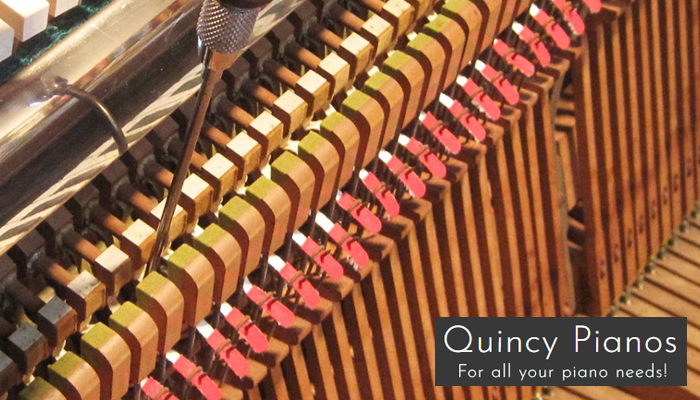Piano Regulation to Restore Your Piano
Piano regulation is the process of fine-tuning the mechanical action of your piano. Unlike piano tuning, which focuses on adjusting the pitch of the strings, regulation ensures all the internal parts (keys, hammers, dampers, etc.) work together efficiently.
This meticulous process is crucial for restoring a used piano to its optimal state and maximizing the playing experience on both grand pianos and upright pianos.

Over time, the keys, hammers, and other components of your piano naturally wear. Without regulation, this wear can lead to inconsistencies in touch, response, and sound. This meticulous process allows you to regain the full potential of your instrument, resulting in a more consistent, responsive, and musically expressive playing experience.
By combining it with regular tuning, you can ensure your piano stays in top condition for years to come.
Here’s what a typical piano regulation process might involve:
Adjusting key height and dip: This ensures a smooth and even keystroke.
Regulating let-off and escapement: This optimizes the timing and responsiveness of the hammers striking the strings.
Hammer shaping and voicing: This fine-tunes the tone and clarity of each note.
Regulation of dampers: This ensures proper string muting for a clean sound.
Tuning: After regulation, complete tuning is performed to achieve optimal pitch across all the strings.
Only skilled piano technicians can restore a piano’s touch, tone, and responsiveness. Investing in professional regulation service by a qualified piano technician extends the life of your instrument and allows you to enjoy its music fully.
Brief Description of Piano Regulation Terms
Piano regulation involves adjusting various components within the piano action to optimize its performance.
These components include:
Blow distance: The distance between the hammer and the string when the key is at rest.
Key level and dip: The height and depth of the keys.
Lost motion: The slight delay between the key being pressed and the hammer moving.
Drop: The distance the hammer falls after the let-off.
Hammer alignment: The positioning of the hammer.
Damper take-off: The timing of the damper lifting off the string.
A regulated piano is a joy for any musician to play, inspiring new levels of musical expression. By entrusting your instrument to a professional, you’re ensuring it reaches its full potential and becomes the best possible tool for your musical journey.
Why Choose Quincy Pianos
My years of experience and dedication to piano restoration guarantee a meticulous and personalized approach, transforming your instrument into a masterpiece.
I’ll carefully diagnose your piano’s specific needs and implement precise adjustments, restoring its responsiveness and tonal brilliance. While many experts also offer the same service, nothing compares to my commitment to achieving the highest standards.
With my expertise, your piano will not only sound better but will also feel incredible to play, inspiring your creativity and elevating your performance.
top-notch piano regulation services
I’m all about bringing out that quality and hidden potential.
Let’s give your piano the VIP experience.
Call me and schedule your appointment.